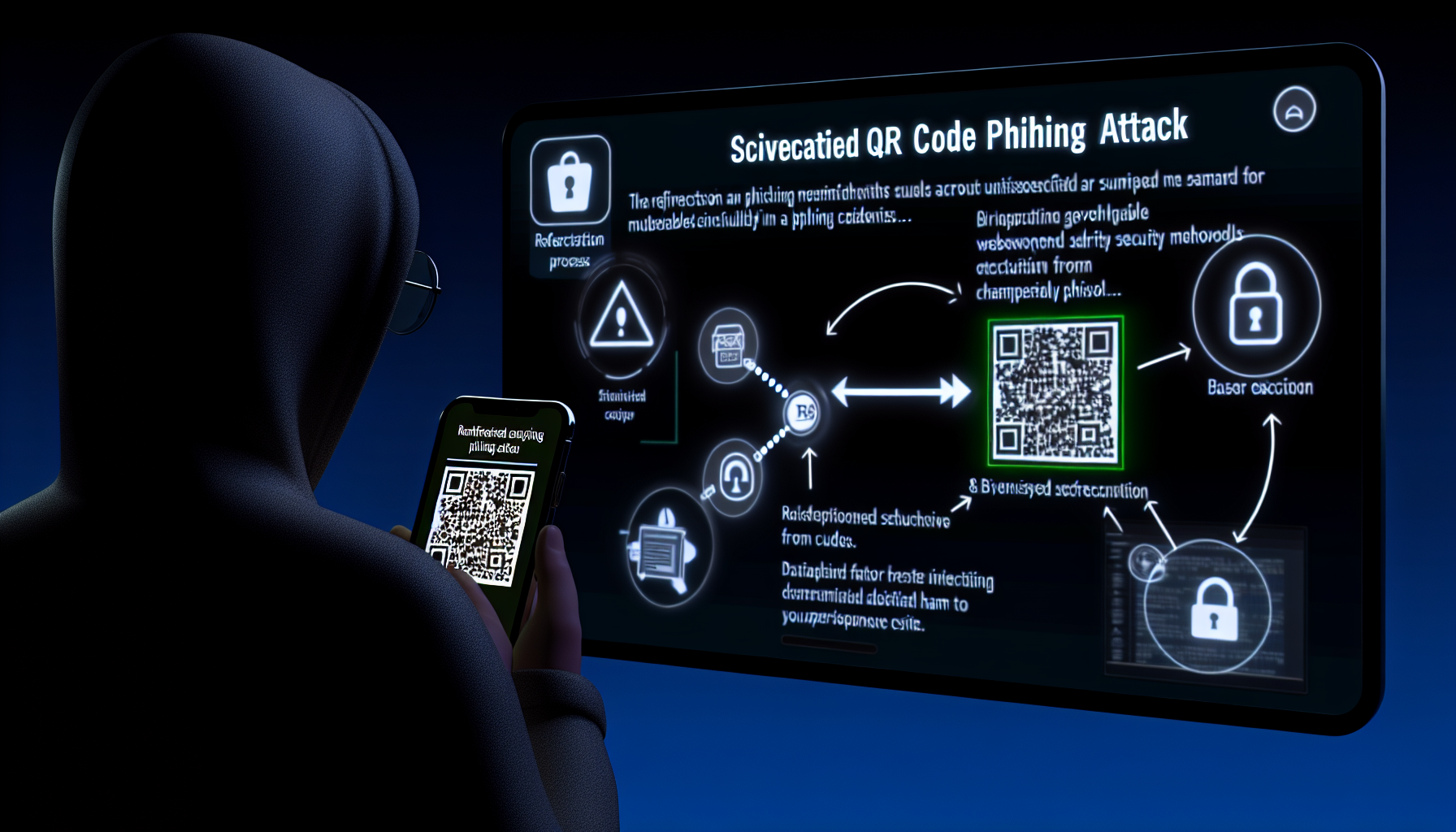Threat Overview
The Security Operations Center (SOC) has recently identified a significant evolution in phishing tactics, as detailed in the latest threat report published by AlienVault on April 1, 2025. This report, titled Evolution of Sophisticated Phishing Tactics: The QR Code Phenomenon, highlights the emergence of QR code-based phishing attacks, commonly referred to as quishing.
QR codes have become ubiquitous in our daily lives, providing a convenient way to access information with a simple scan. However, cybercriminals have exploited this convenience to launch sophisticated phishing campaigns that bypass traditional security measures. These attacks embed malicious URLs within QR codes, enticing users to scan them using their smartphones. Once scanned, the URL redirects the user through a series of legitimate websites and verification processes, ultimately leading to a phishing site designed to harvest sensitive credentials.
Tactics and Techniques
The evolution of these tactics involves several sophisticated methods:
- Concealment of Final Phishing Destinations: Attackers use redirection mechanisms provided by legitimate websites to hide the final destination of the phishing URL. This makes it difficult for security tools to detect and block the malicious activity.
- Cloudflare Turnstile Integration: To add an extra layer of legitimacy, attackers incorporate Cloudflare Turnstile for user verification during the redirection process. This human verification step helps evade automated detection mechanisms used by security software.
-
Targeted Credential Harvesting: Some phishing sites are specifically designed to target the credentials of particular victims. By tailoring the attack to known individuals or organizations, attackers increase the likelihood of success.
-
URL Redirection and Open Redirects: Attackers exploit open redirects on legitimate websites to further obscure the final destination of the phishing URL. This technique makes it challenging for security analysts to trace the origin of the attack.
-
Human Verification within Redirects: By incorporating human verification steps, attackers ensure that only genuine users reach the phishing site. This reduces the chances of detection by automated security tools and increases the effectiveness of the phishing campaign.
Impact on Security
The use of QR codes in phishing attacks presents a significant challenge to both security detection mechanisms and user awareness. Traditional security measures, such as email filters and web content filters, may not be effective in detecting these sophisticated tactics. Additionally, users are often unaware of the risks associated with scanning QR codes from unknown sources.
Recommendations for Mitigation
To mitigate the risk posed by QR code-based phishing attacks, organizations should consider the following recommendations:
- User Education: Conduct regular training sessions to educate employees about the risks associated with scanning QR codes from untrusted sources. Emphasize the importance of verifying the legitimacy of QR codes before scanning.
-
Multi-Factor Authentication (MFA): Implement MFA for all sensitive accounts and systems. This adds an extra layer of security, making it more difficult for attackers to gain unauthorized access even if credentials are compromised.
-
Advanced Threat Detection: Deploy advanced threat detection tools that can identify and block suspicious URLs and redirection mechanisms. These tools should be capable of analyzing QR codes and their associated URLs in real-time.
-
Regular Security Audits: Conduct regular security audits to identify and address vulnerabilities in the organization’s security infrastructure. This includes reviewing URL redirection policies and implementing stricter controls on open redirects.
-
Incident Response Plan: Develop and maintain an incident response plan that outlines the steps to be taken in case of a successful phishing attack. This should include procedures for containing the breach, investigating the root cause, and restoring affected systems.
-
Collaboration with Security Communities: Engage with security communities and threat intelligence platforms to stay informed about the latest phishing tactics and techniques. Sharing information and best practices can help organizations better prepare for emerging threats.
Conclusion
The evolution of sophisticated phishing tactics, particularly the use of QR codes, poses a significant challenge to cybersecurity. By staying informed about these emerging threats and implementing robust security measures, organizations can better protect themselves against these advanced attacks. Regular user education, advanced threat detection, and a proactive approach to security are essential in mitigating the risks associated with QR code-based phishing.
For more detailed information on this threat report, please refer to the external references provided:
- AlienVault OTX Pulse: https://otx.alienvault.com/pulse/67ec07e8a8b6f59ba9eabc0d
- Unit 42 Palo Alto Networks Report: https://unit42.paloaltonetworks.com/qr-code-phishing/
Please check the following page for additional information:
https://unit42.paloaltonetworks.com/qr-code-phishing/
Discover more from ESSGroup
Subscribe to get the latest posts sent to your email.





